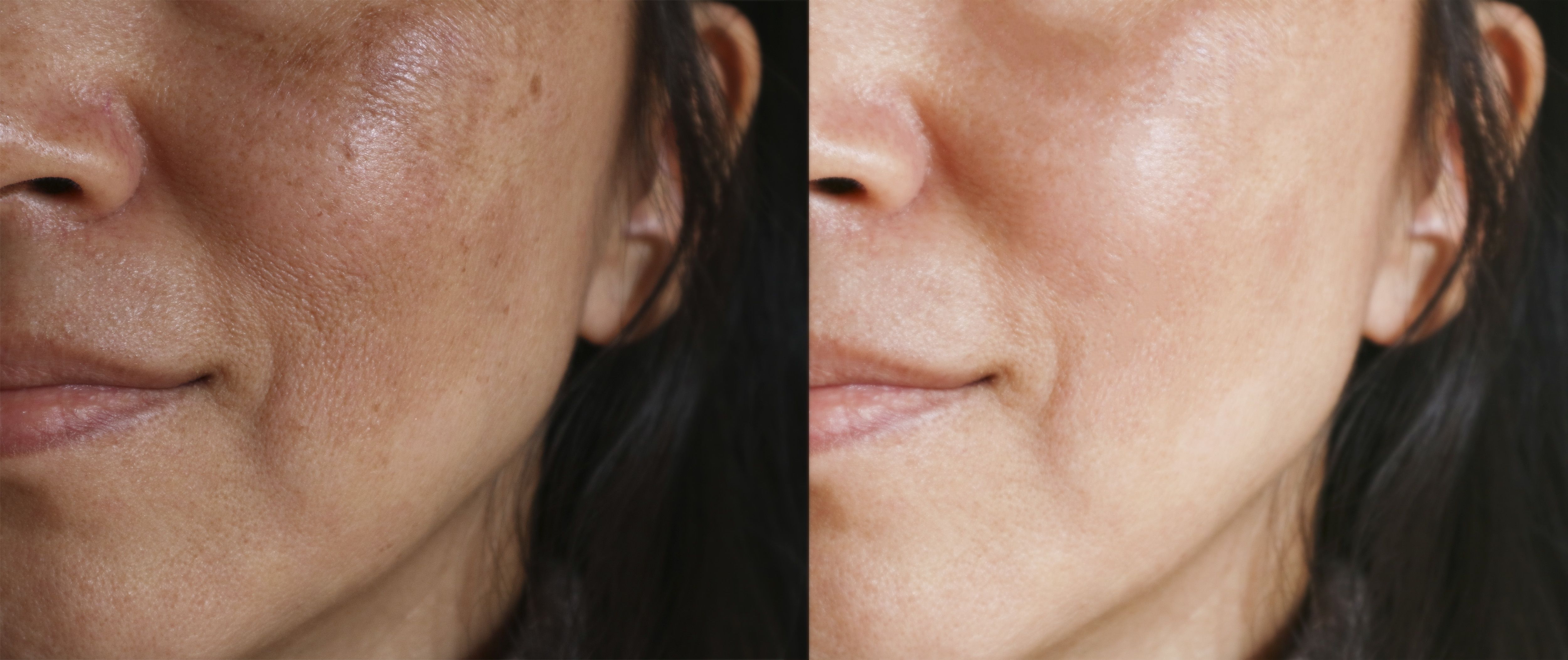- Acne
- Actinic Keratosis
- Aesthetics
- Alopecia
- Atopic Dermatitis
- Buy-and-Bill
- COVID-19
- Case-Based Roundtable
- Chronic Hand Eczema
- Drug Watch
- Eczema
- General Dermatology
- Hidradenitis Suppurativa
- Melasma
- NP and PA
- Pediatric Dermatology
- Pigmentary Disorders
- Practice Management
- Precision Medicine and Biologics
- Prurigo Nodularis
- Psoriasis
- Psoriatic Arthritis
- Rare Disease
- Rosacea
- Skin Cancer
- Vitiligo
- Wound Care
Article
Tranexamic acid for melasma
Author(s):
Adding oral tranexamic acid as adjuvant therapy is effective for treating refractory melasma, according to recently published research.
Adding oral tranexamic acid as adjuvant therapy is effective for treating refractory melasma, according to recently published research.(©AdobeStock_213065730_Carla Nichiata)

Melasma is traditionally difficult to treat. To date, its pathogenesis is unclear. But, data shows including tranexamic acid–a synthetic derivative of lysine–in an ongoing treatment protocol can produce improvement in most patients.
Previous research discovered tranexamic acid slows melanin synthesis by inhibiting the plasminogen/plasmin pathway. Doing so blocks interactions between melanocytes and keratinocytes. Consequently, using either oral or topical tranexamic acid can decrease melasma-associated skin pigmentation and reverse any melasma-related dermal changes, including reduced redness and a decreased number of vessels.
In a retrospective analysis, published in a 2016 Journal of the American Academy of Dermatology issue, researchers revealed a twice-daily oral tranexamic acid dose reduced melasma effects. The article was selected as a "game changer" study in the Oct. 30, 2018 issue of the Journal of the American Academy of Dermatology.
The 2016 study, which included melasma patients from a dermatologic center in Singapore from January 2010 to June 2014, looked at clinical characteristics, treatment outcomes, and adverse effects of TA therapy. Oral tranexamic acid was used as an adjuvant therapy to topical or laser treatments in 98.2 percent of patients.
THE DATA
Investigators included data from 561 patients. Of that group, 91.4 percent (513) were female, and 8.6 percent (48) were male. Most patients (95 percent) were categorized as having treatment-resistant melasma because they had received previous melasma therapy without any satisfactory results. Of the group, 530 (94.5 percent) had previously used topical depigmentation creams, and 199 (35.5 percent) underwent lasers or intense pulsed light treatments.
In some cases, investigators reported, controllable factors could have contributed to their melasma. Existing research links hormonal therapy to melasma appearance. In this study, 21 patients (3.7 percent) used oral contraceptives, 6 (1.1 percent) used hormone replacement therapy, and 2 (0.4 percent) used an intrauterine contraceptive device before melasma onset. In addition to hormonal therapies, genetics and sun exposure can also be factors.
With that knowledge, researchers said, dermatologists could augment melasma treatments by informing patients about the impacts of these factors.
In this study, the average participant age was 40.7 years, and the average melasma duration prior to the introduction of oral tranexamic acid was six years. Patients received a mean of four months of oral tranexamic acid therapy consisting of twice-daily 250 mg doses. On average, patients participated in seven months of follow-up.
Overall, the patients tolerated adjuvant oral tranexamic acid therapy well, and improvement occurred, typically, after two months. Nearly 90 percent–89.7 percent of patients–documented melasma improvement. Although oral tranexamic acid was used in conjunction with both topical and laser treatments, there were no statistical differences in clinical outcomes between groups, researchers said.
“This seems to suggest that the effects of oral tranexamic acid were independent of the type of topical therapy used,” they wrote. “And, tranexamic acid might be useful as a monotherapy rather than as an adjuvant.”
Although most patients experienced improvement, not all did. An additional 10 percent remained unchanged, and melasma worsened for 0.4 percent (2 patients). Further analysis revealed sun exposure played a role in the melasma cases that progressed, researchers said.
Patients who improved reported a 50-percent lightening. In general, they had no family history of melasma. 90.6 percent without a family history saw lightening versus 60 percent of those with a family history. Individuals who saw reductions were also older at melasma onset, and they had experienced melasma for longer time periods before oral tranexamic acid introduction.
“This suggests that the vascular component of melasma, which oral tranexamic acid is believed to modulate, is more likely an acquired rather than an inherited feature,” the researchers wrote.
Despite the success, however, relapses occurred. After an average of 7 months post-oral tranexamic acid treatment, 137 patients (27.2 percent) saw melasma recurrence. An additional 7.1 percent experienced transient side effects, including abdominal bloating and headaches, investigators said. One patient developed a lower left limb deep vein thrombosis six weeks after initiating treatment. Researchers determined a family history of protein S deficiency was responsible, highlighting the need to screen patients for thromboembolism, stroke and heart disease risk factors.
Ultimately, investigators said, the study shows oral tranexamic acid could be promising for melasma patients.
“Our results support oral tranexamic acid as a valuable adjunct treatment modality for patients with refractory melasma,” they wrote. “Treatment was well tolerate and the majority of patients demonstrated clinical benefit.”
REFERENCE
Goh CL, Lee HC, Thng TGS, Oral tranexamic acid tranexamic acid in the treatment of melasma: A retrospective analysis, Journal of the American Academy of Dermatology (2016), doi: 10.1016/j.jaad.2016.03.001.
Newsletter
Like what you’re reading? Subscribe to Dermatology Times for weekly updates on therapies, innovations, and real-world practice tips.






